Luna Rossa launches LEQ12. A name that suits her very well. And indeed, looking at her, she seems to have landed from another planet. With those wings sprouting from the hull, she looks more like a spaceship than a racing hull. Indeed, there is something to it as it projects the new challenge to the 37th edition of the America’s Cup launched by Luna Rossa Prada Pirelli into the future. The objective is only one: to win the selection races and in October 2024 in the waters of Barcelona win the right to race against Emirates Team New Zealand. A film we have already seen, albeit with a different epilogue. And yet, in 2021 in New Zealand Luna Rossa Prada Pirelli was really close to achieving the great feat. (Here all our posts about Luna Rossa)
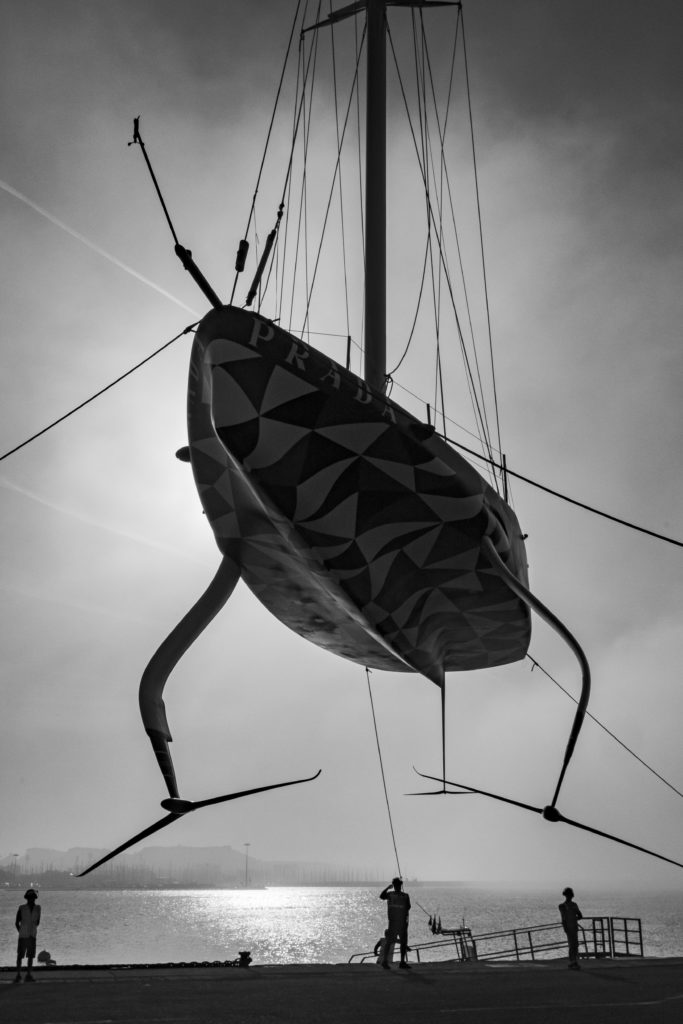
“The direct clash against the New Zealanders was on a level playing field and the first races we won gave us great energy,” commented Max Sirena, Team Director and Skipper. “I am not one who likes to make excuses or talk about bad luck but, in this case, I feel that fate was not very helpful to us. On a couple of occasions maybe we should have been more cynical, and on another occasion we were ahead by 1.5km and then we know how that turned out. If we had won that match we would have been 3-all instead of 4-2 and we know how much the psychological factor can count in a competition like this and how much pressure we could have put on our opponents. You play for everything in one shot. That’s the beauty of the Copa America: it’s almost impossible to win, but if you don’t try you can never succeed,’ Sirena concludes. A phrase also dear to a certain Sir Peter Blake.
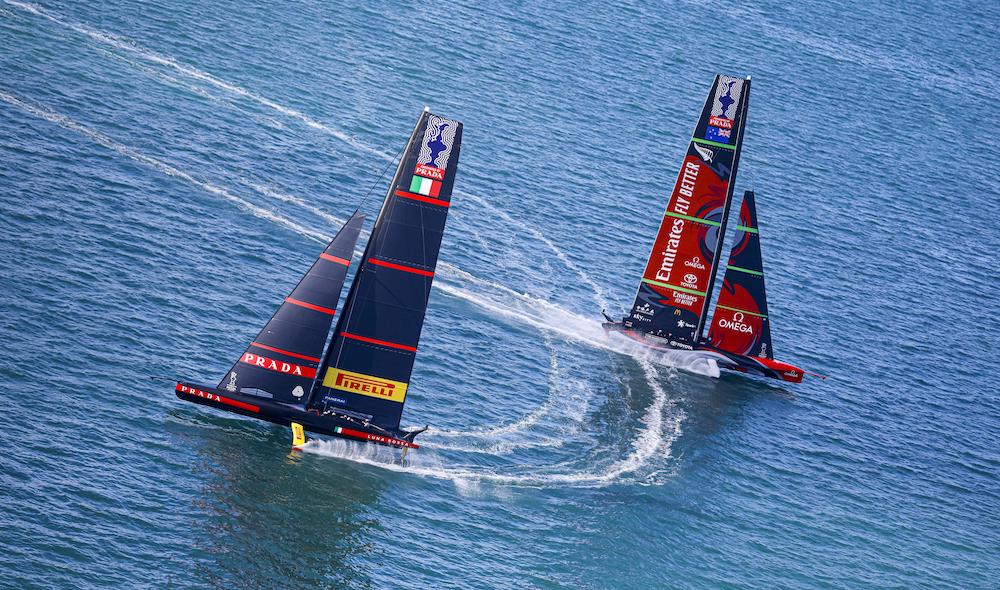
The Kiwi sailing legend was fond of repeating that the America’s Cup is a game where winning is almost impossible but not impossible. Patrizio Bertelli also knows this well, and in 2000 he made his debut on the scene of this competition with a bang, coming close to winning the prestigious trophy against the Kiwis. At the time it was a different America’s Cup, contested with other boats, but the spirit in 22 years has remained the same, as we were able to see at the launch of the Luna Rossa prototype, the laboratory boat of the Italian challenge. One thing is certain, if it is true that victory is still missing from the roll-call, it is equally true that Luna Rossa’s presence in six participations, if we include the next one, have generated a true Italian movement in the history of this trophy.
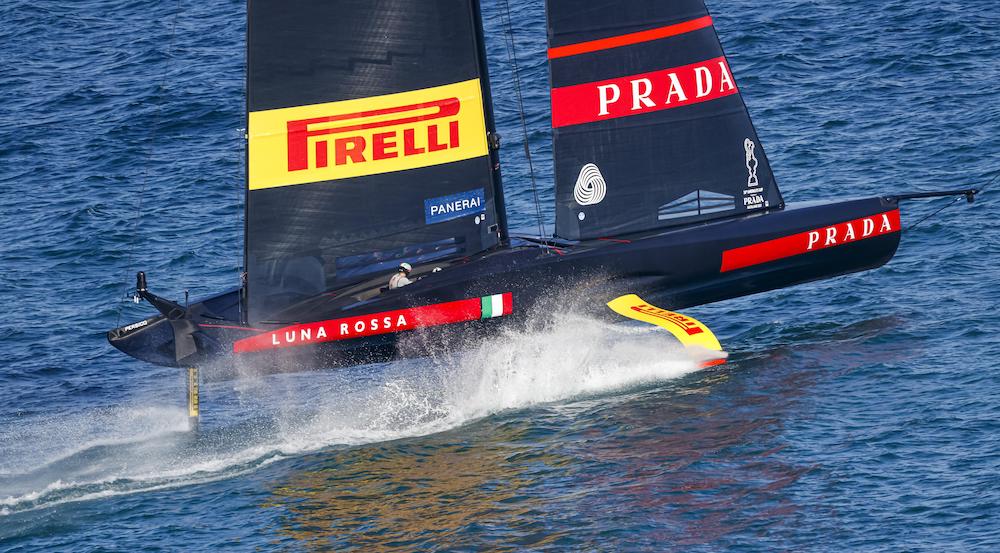
“Without taking anything away from Azzura or Moro di Venezia,” comments Patrizio Bertelli, “the America’s Cup has always been, at a historical level, an Anglo-Saxon driven competition. Even in Alinghi’s victory (Auckland 2003),’ continues Bertelli, ‘the contribution of the almost all-New Zealand crew was decisive. The arrival of Luna Rossa has rewritten the rules a bit. Not only that. It helped create a real Italian sailing movement to the point that many Italian sailors were able to make a name for themselves, build a reputation and play an important role over the years in this competition”.
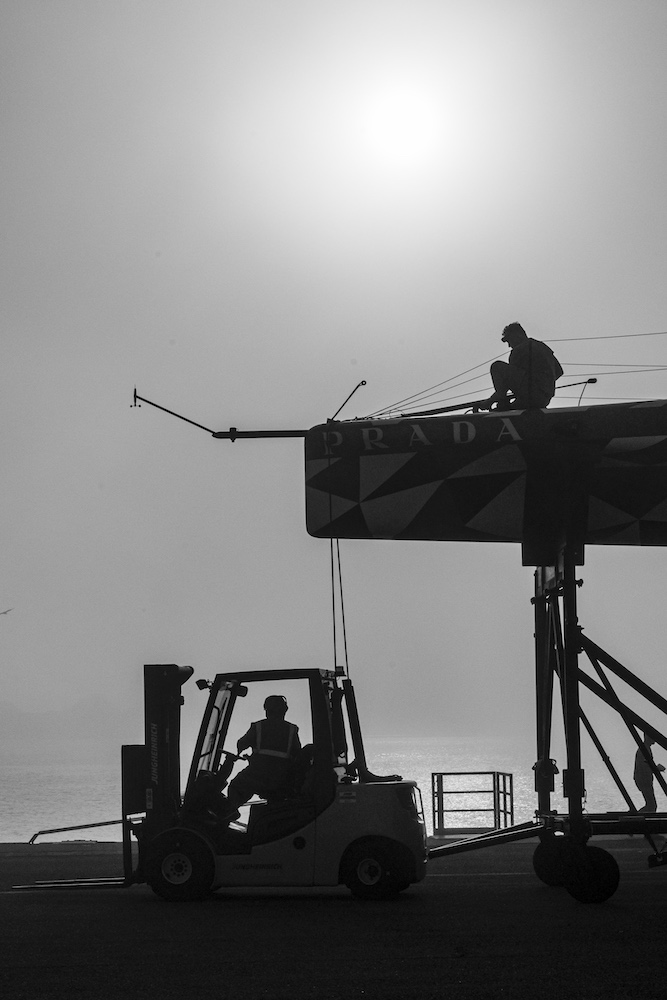
One goal Bertelli has already achieved, however: with the next one, he will be six times a participant in the America’s Cup, never before in the history of the oldest sporting trophy in the world has anyone been able to boast such an achievement. To get an idea, Sir Thomas Lipton stopped at five, the last one in 1930 was with Shamrock V. That is why regardless of the sporting aspect the 37th edition of the America’s Cup will be somewhat special for the Italian team.
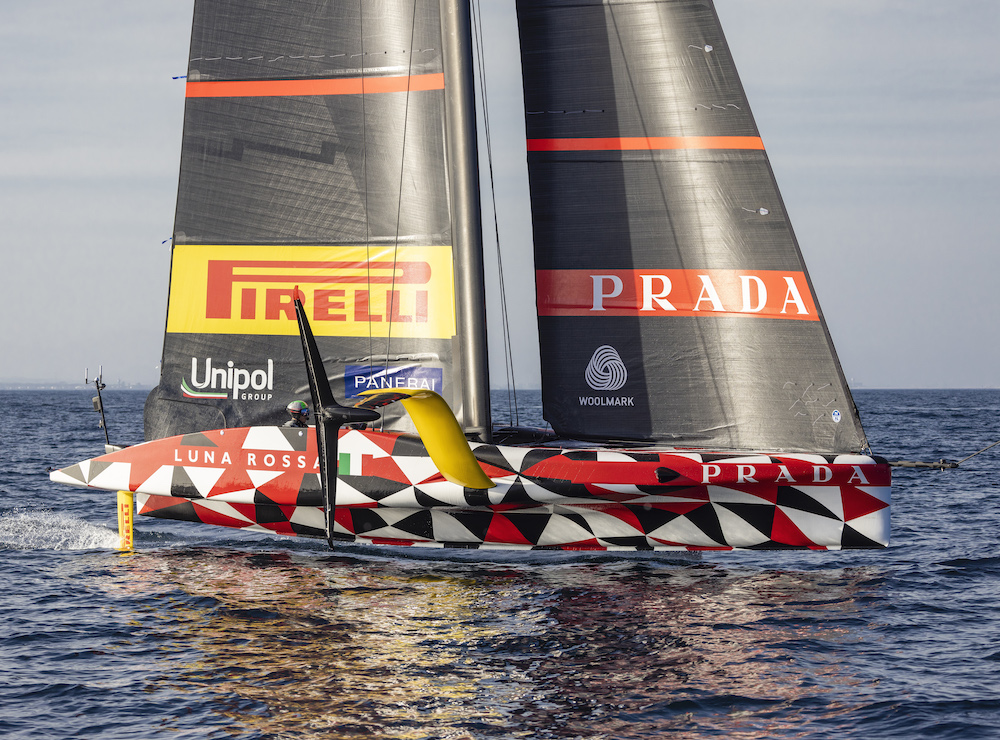
Luna Rossa: a team that is still and increasingly Italian
Luna Rossa Prada Pirelli again presents an all-Italian challenge, an aspect confirmed by the partners who have chosen to come on board. Once again, the club representing the Italian hull is the Circolo della Vela Sicilia, just as sponsors such as Prada, Pirelli, Panerai, and The Woolmark Company have renewed their commitment, joined by the new entry Unipol Gruppo.
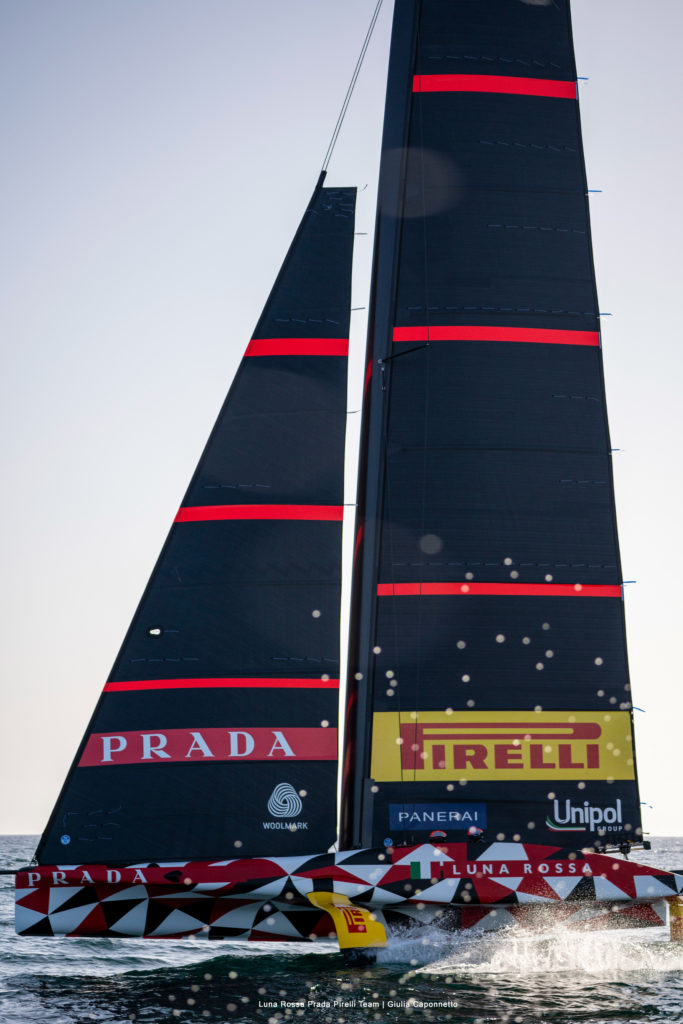
“Tradition, technology and passion for challenges are the main ingredients of the America’s Cup, values that Pirelli has always supported. We are once again on board to support a project in which we believe, a team full of talent and a boat, Luna Rossa, which over the years has contributed to writing important pages of this extraordinary competition. We are proud and honoured to see the Pirelli brand on these sails full of tradition and that will once again make many Italians dream, not only those who are passionate about the sea. The boat and the crew have the potential to win and to excite us. Today we celebrate the start of another wonderful adventure,” commented Marco Tronchetti Provera, Executive Vice President and CEO of Pirelli.
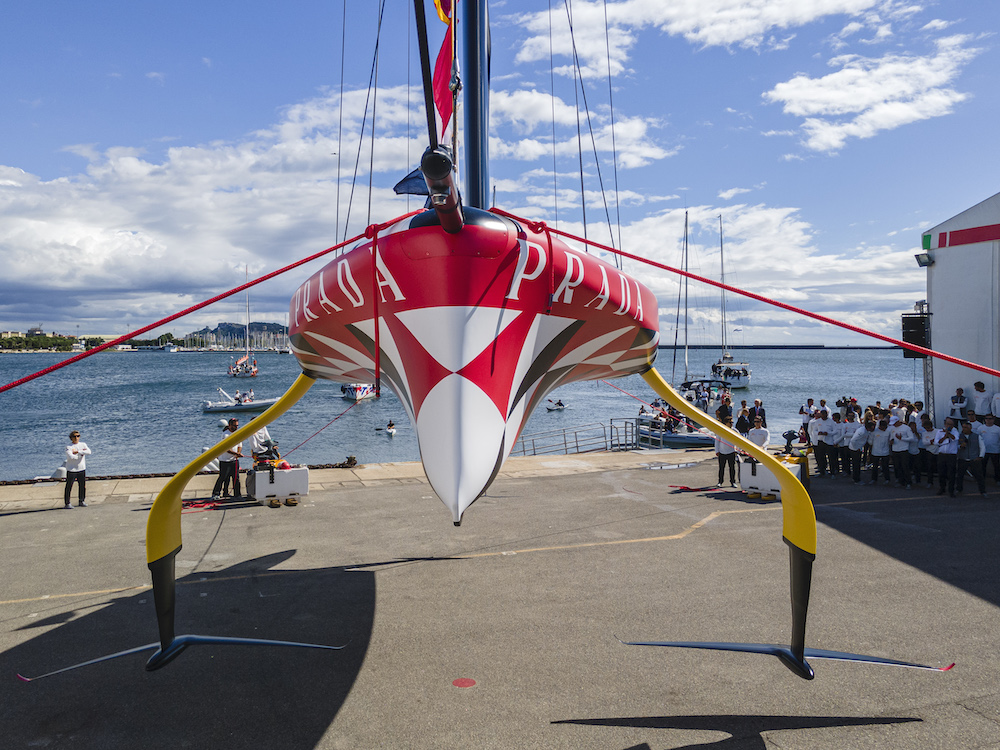
And staying on the theme of the profoundly Italian soul of the challenge, the role that the new promises of national sailing will surely play is worth mentioning. “The only foreigner on board is James Spithill but he is well on his way to speaking fluent Italian,” smiles Sirena. Luna Rossa’s ‘cantera’ has churned out and will continue to churn out new talent, and the Italian Sailing Federation will play an important role here.
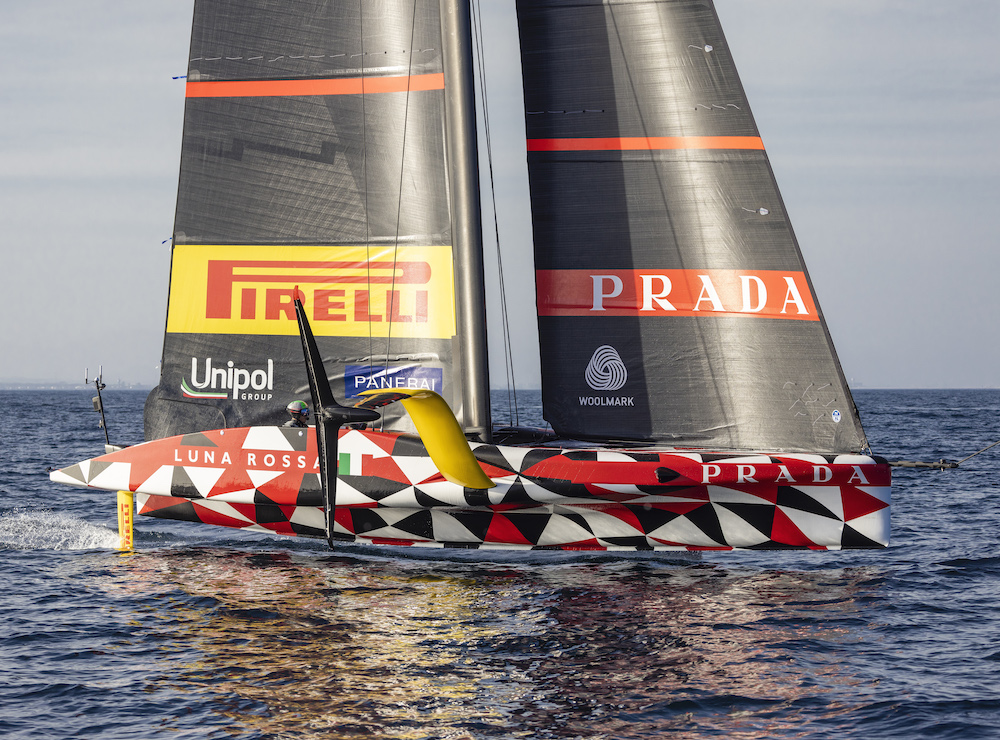
“We have recently started the selection programme for the women’s and men’s crews with which the Youth and Women America’s Cups will be raced,” comments Sirena. “Next year we will participate in a regatta programme with flying boats to gain experience in manoeuvring at these speeds. The FIV is doing an extraordinary job on young people and we are sponsoring the Next Generation Foil Academy by FIV powered by Luna Rossa programme. Having said that we have two very young guys in the team who in perspective can earn a place aboard the AC 75”. A first clue points straight at the pair Caterina Banti and Ruggero Tita, fresh winners of the Rolex World Sailor of the Year. Tita himself was spotted at the helm of Luna Rossa’s prototype during the first training outings. Marco Gradoni has also been spotted at the Cagliari base, recently come of age and already with three world titles in the Optimist class under his belt. Not to mention the contribution of Vittorio Bissaro, another Italian sailing talent. In short, Luna Rossa’s NextGen is already a splendid reality.

LEQ12 the flying prototype
“It’s normal that when you restart, the first thing you do is brainstorm reviewing all the positive but also the negative aspects of the previous campaign,” says Sirena. “Of course we carefully analysed the solutions adopted by the opponents who beat us. We carefully studied everything they did. We examined the hull lines of all the hulls that participated in the previous Cup and carefully observed every detail and all the appendages.
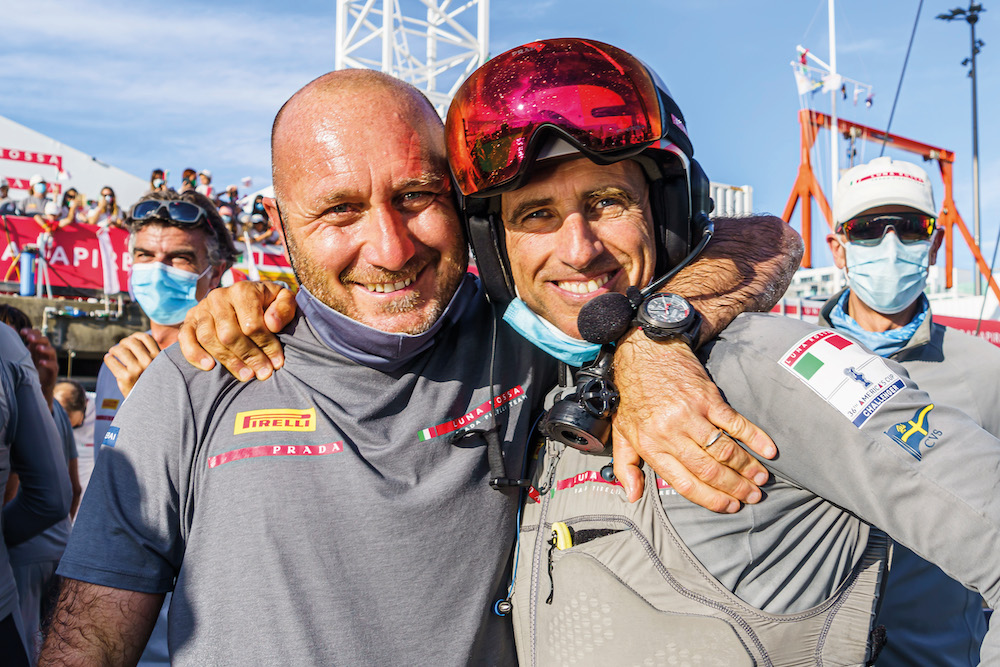
A wealth of data that has come in handy to develop a prototype that is very extreme and will require great care in handling. And the first outings have shown this, as evidenced by the recent capsize that occurred during a training session in challenging wind and sea conditions. “It is a laboratory boat to all intents and purposes and we pushed hard both aerodynamically and hydrodynamically. We made a huge effort to come up with this boat, just think that the British took to the water after us with their prototype. It took 30 thousand of work to get it into the water. It was like designing an AC75.
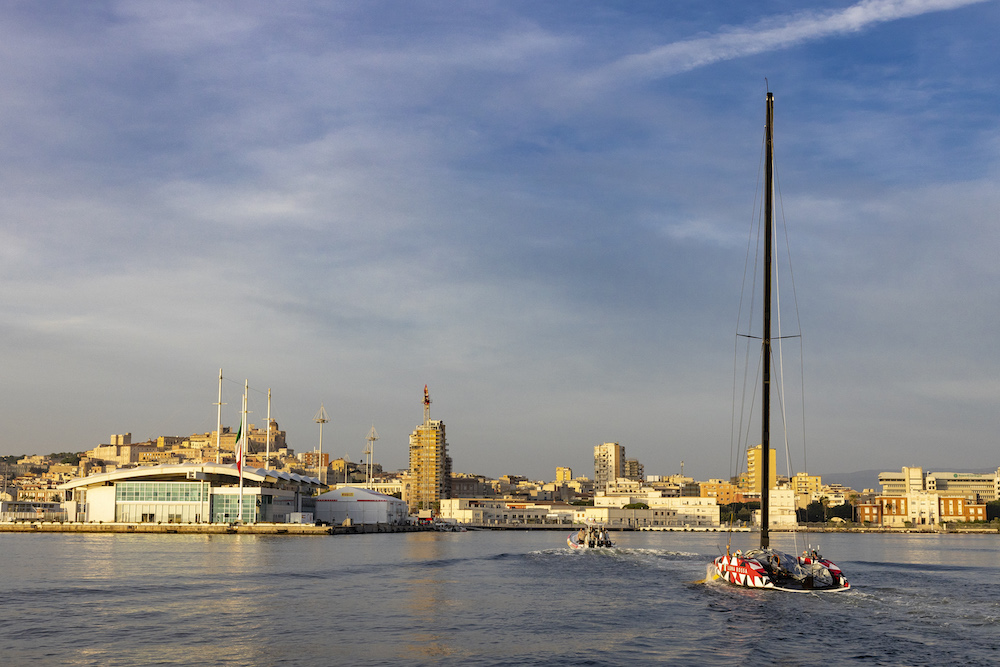
There are some components or aspects of the boat that a careful eye sees that are not to scale because we wanted to get as close as possible to an AC75. Here are some numbers to help better understand the scale of the effort. Despite its small size, the carbon hull is about 12 metres long, and construction took almost 10 months and over 30,000 hours of work by more than 25 people and 40 design team members. For the construction of the hull and composite components, 5,000 square metres of carbon fibre were applied to different materials that make up the structural core. LEQ12 has a wing mast. The sails, similar to those used on the AC75, adopt North Sails technology. The bowsprit will be smaller and will no longer be used for the Code 0 (no longer required in the next Cup edition), but as a support for the technical equipment on board.
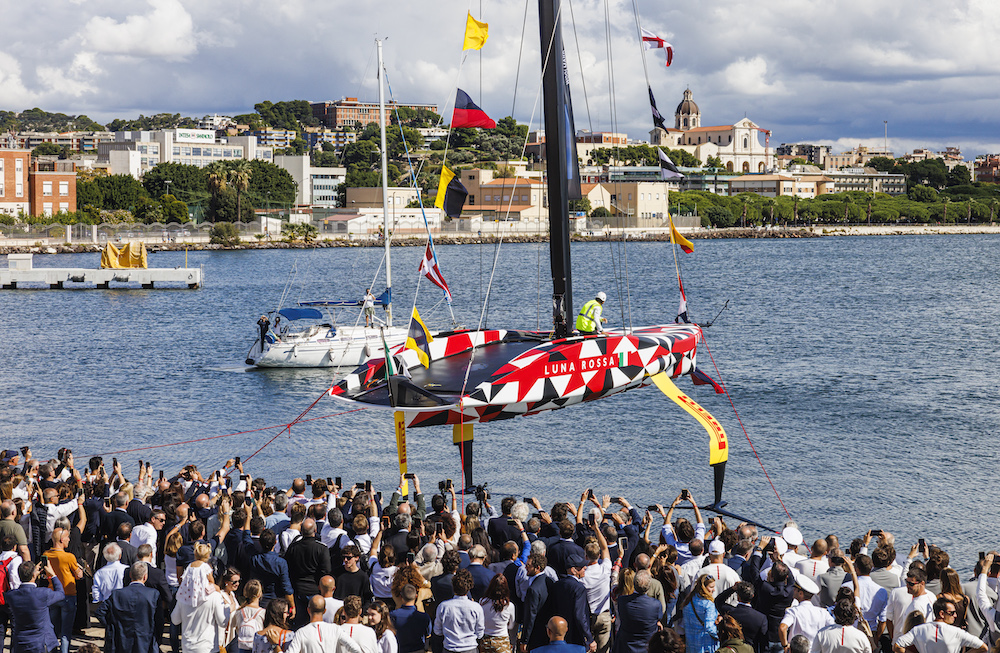
Luna Rossa: Italian technology, new format and an increasingly hi-tech Cup
LEQ12 is just the first step. The boat aboard which will be crewed by a four-person crew (with the possibility of embarking two more to carry out technical activities or as guests) will provide a whole series of indispensable information to fine-tune the design of the AC75 with which Luna Rossa will participate in the selection races in two years’ time. In fact, among the constraints of the new protocol is the impossibility of using the old AC75 to experiment with new solutions. Interventions in this sense are limited to sails or deck plans but not to foils.
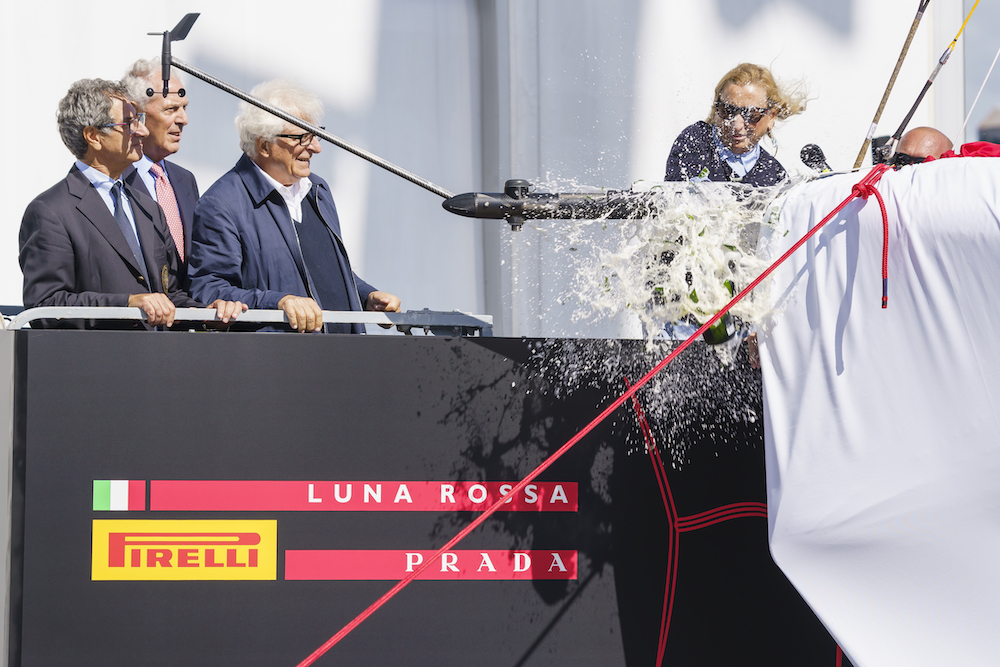
But the novelties also concern other aspects. There will be eight crew members on board as opposed to 11 in the last edition. To generate the necessary energy there will no longer be “grinders” at the winches and instead of arms there will be the legs of the so-called “cyclists” who thus return to the scene after their appearance aboard the AC50, the Emirates Team New Zealand catamaran that in 2017, winning in the waters of Bermuda, brought the trophy back to Auckland. Actually, this is not an absolute novelty as back in 1977 Pelle Peterson aboard the 12 Metre International Tonnage Sverige had, with little success, experimented with this solution.
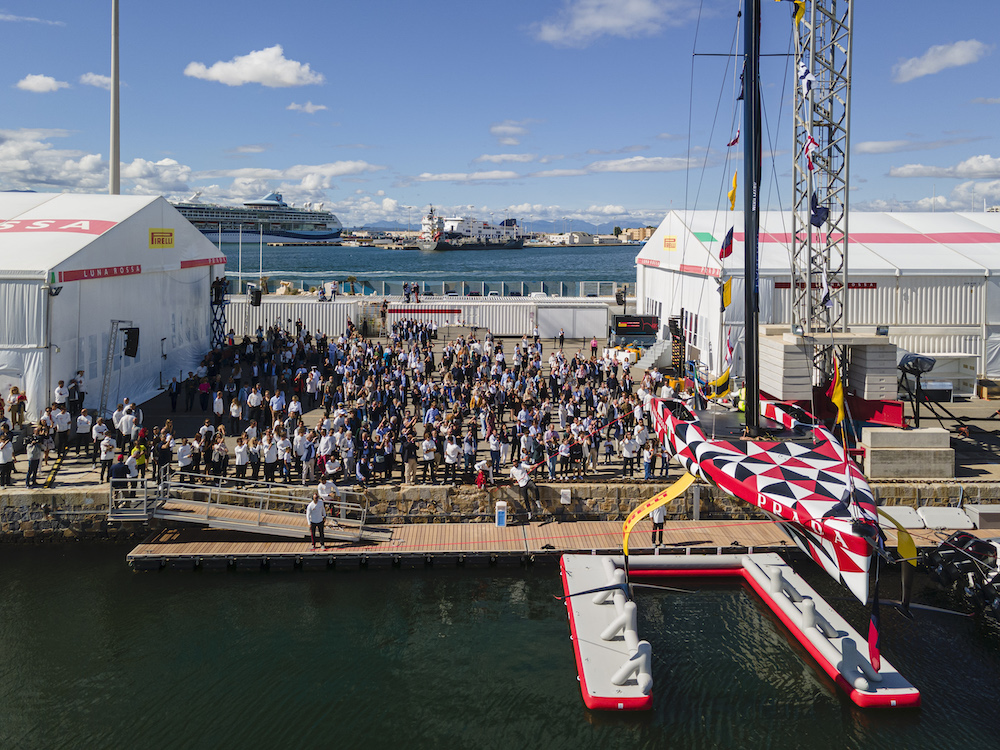
At the design level, the area on board the AC75 intended to accommodate the ‘cyclors’ has been conceived in such a way as to guarantee maximum safety and will therefore have, among other things, a watertight seal in the event of a tip-over. The total investment is between EUR 90 and 95 million. But there are many variables to take into account, linked to the skyrocketing costs of raw materials such as, for example, special steels that are very difficult to find on the market. Among many novelties, there are also some fixed points: starting with the double helmsman solution, which can be considered exclusive to Luna Rossa as seen in the last edition.
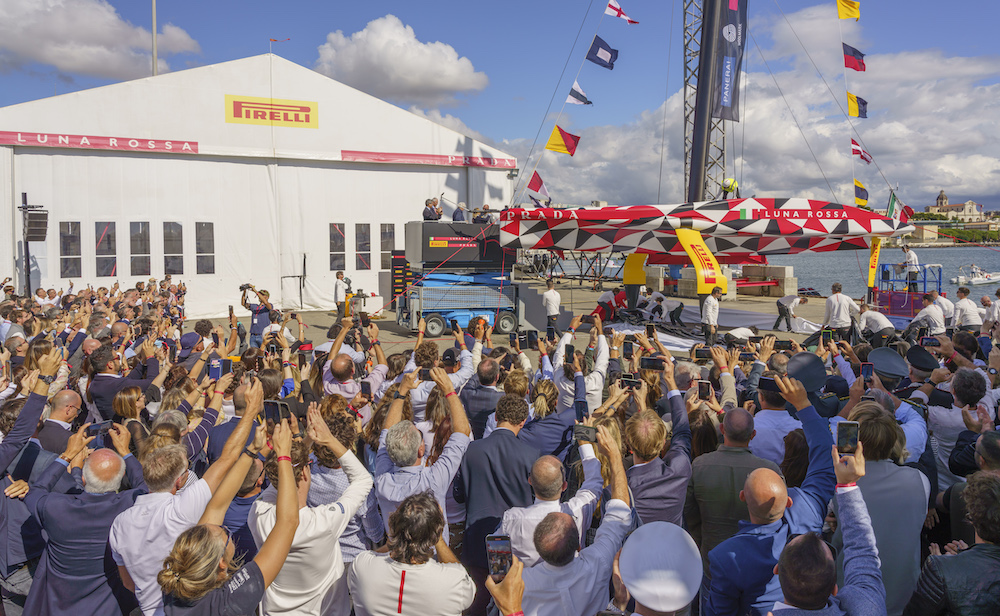
“I remember that when we presented ourselves with this solution at the beginning everyone looked at us with a bit of scepticism. Then, when things were done, everyone started to copy us but it’s not that simple,” comments Sirena. Also because sailing in this mode means taking 50% of the time away from each helmsman, and to get the best performance you have to train a lot and find the right chemistry. Just like in a relay race. And today, observing the buying campaign of the other teams, it is clear to everyone that the double helmsman solution has set the standard. Of course, everything will then depend on the field factor, or rather the race course.
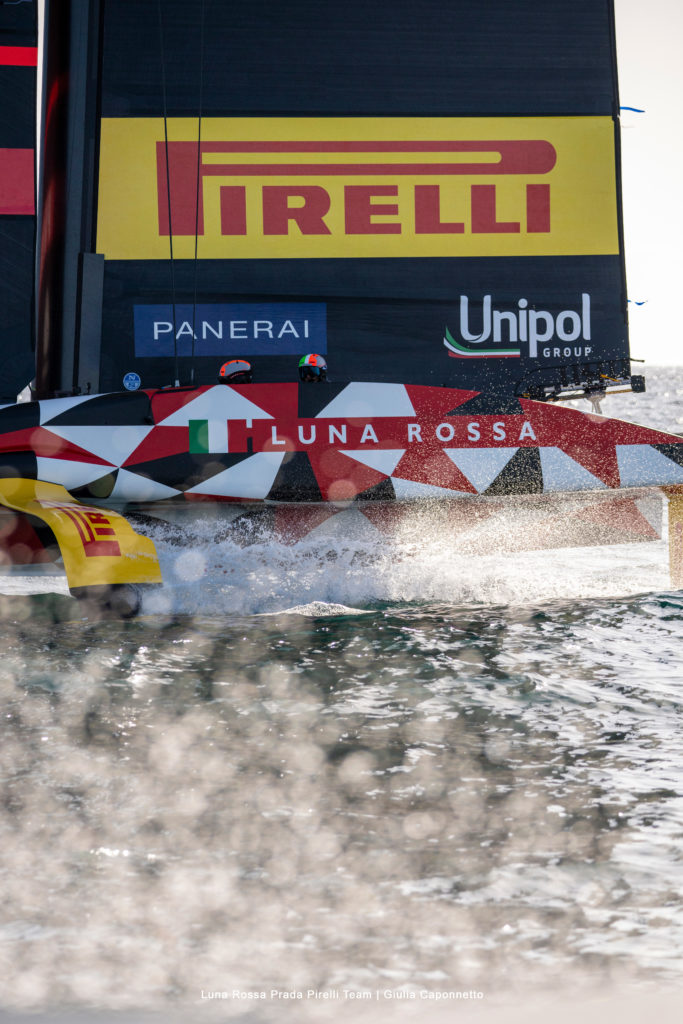
“We are starting from scratch,” continued Sirena, who added: “We expect much longer and more pronounced wave conditions. It will therefore be crucial to arrive with clear ideas on what set up to adopt, especially in terms of hull geometry and foils.” The question of development will again be central. “We always forget that during the previous campaign we had to deal with the Covid that blocked or slowed down the development of some parts,” comments Bertelli. ‘We were greatly penalised in this respect. I think the Covid factor held us back a lot. We had already identified a whole series of interventions, but there was no chance to do anything. For example,’ continues Bertelli, ‘we had to miniaturise all the electronic controls of the drifts and the company that had been entrusted with this task was unable to complete the work precisely because of the limitations imposed by Covid. And speaking of companies, the new AC75 will once again be built by Persico Marine.
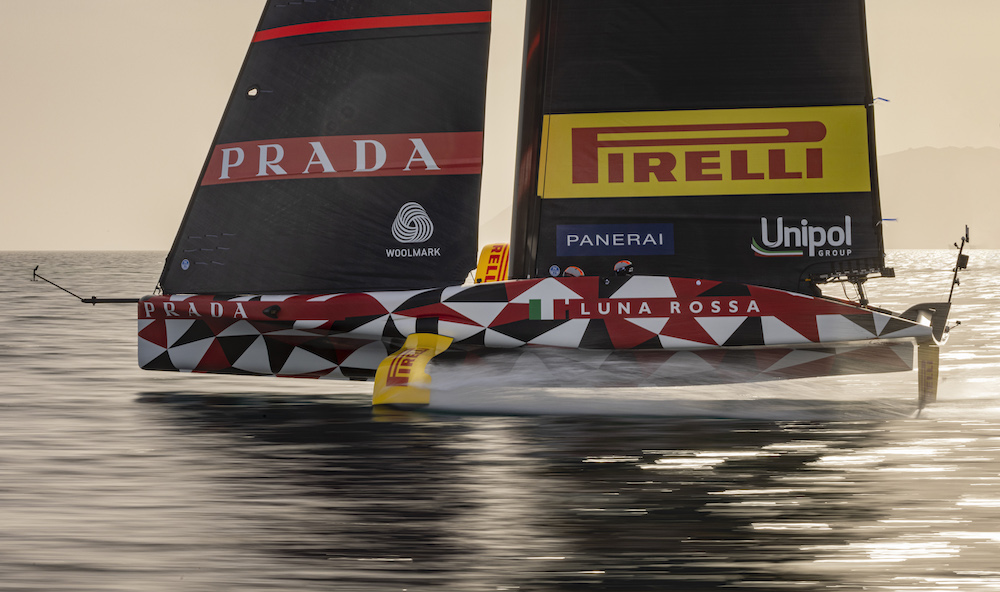
But that is not enough. “With Persico Marine we are developing the new hydrogen catamaran, which will also be built in their factory,” Sirena continues, “The design is ours as is the engineering. It is an important challenge from a technological point of view and we have initiated a series of contacts with very good Italian companies operating in the automotive world. Some components, especially for the hydrogen-related part, come from abroad. Batteries, electric motors and control systems will be Italian. It will be something never seen before’. An obligatory choice that fits in with the new regulations that require every team to have a hydrogen-powered chase-boat. This is a way of once again underlining the importance of Italian know-how on the technological front.
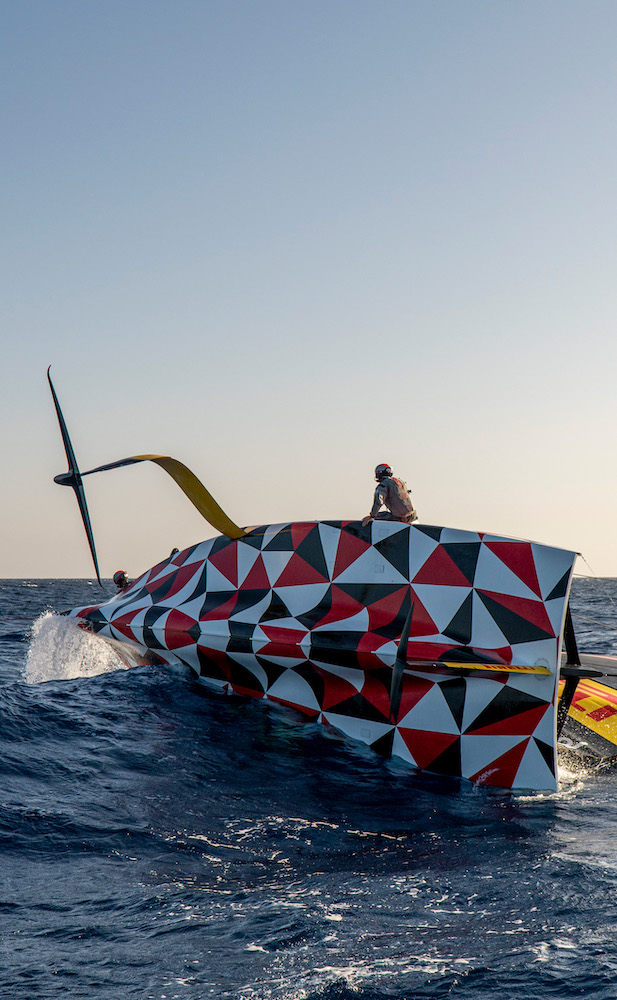
In this case, the partnership with Pirelli, a company whose contribution proved invaluable in the previous America’s Cup campaign, will also prove valuable. And, staying on the subject, the higher the speeds, the more the materials used prove to be of fundamental importance. One only has to think of what happens in MotoGP or Formula One and the benefits derived from the way certain elements at high speeds tend to deform, thus improving aerodynamic efficiency. In this sense, this edition of the America’s Cup will highlight the contribution that Formula One itself can have in the development of the new AC75s. In addition to Pirelli for Luna Rossa, of note is the contribution of the engineers working in the Mercedes- AMG Petronas team for the British challenger, not to mention the role of Red Bull Advanced Technologies, joined by Adrian Newey, for the Swiss challenge that marks Alinghi’s return to the America’s Cup.
Matteo Zaccagnino




